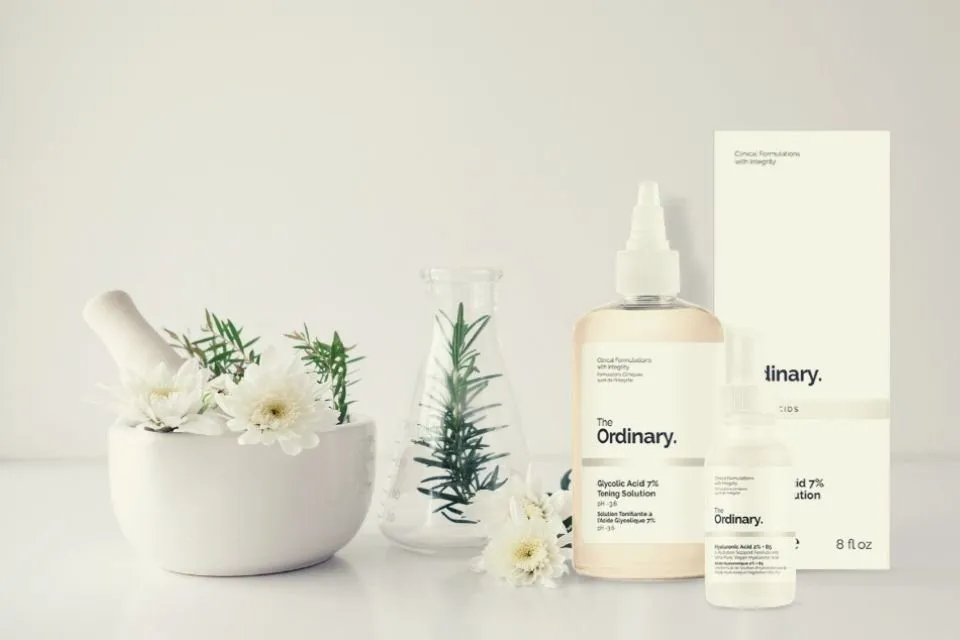
Can Hyaluronic Acid and Glycolic Acid be used together?
Yes, they are both called acids, but each offers different benefits and also work perfectly together. The question is, how do hyaluronic acid and glycolic acid work together?
What are some specific benefits of incorporating both into your skincare routine? Stay tuned as we share how you can benefit from the combination of these two powerful ingredients.
Which comes first, glycolic acid or hyaluronic acid? When it comes to using hyaluronic acid and glycolic acid, despite being called acids, they are actually quite different.
Glycolic acid is a member of the Alpha Hydroxy Acid (AHA) family, and it exfoliates the top layer of the skin at the stratum corneum to remove dead skin cells and debris while removing excess sebum, dirt, and bacteria from the pores. If this is not removed, pores can become clogged, leading to blackheads, blemishes, and acne.
Due to the exfoliating properties of glycolic acid, I recommend using this first, as you will find that the hyaluronic acid-rich product that follows absorbs quickly and effectively into the skin.
However, if you find that your skin type is prone to tightness and sensitivity, you may want to try hyaluronic acid first and then try glycolic acid to counteract this.
This way you can ensure that the skin barrier is well hydrated and can absorb every gram of water around the skin or other formulas, resulting in a complexion that radiates with continued hydration.
Shouldn’t be mixed with acetic acid?
Since glycolic acid is a chemical exfoliant, it’s best not to mix it with other exfoliants like alpha hydroxy acids (AHAs) like lactic acid and beta hydroxy acids (BHASs) like salicylic acid.
By avoiding these ingredients together, you won’t overstress your skin and deprive it of the important water and oils it needs to stay healthy.
Using these acids together can cause your skin to feel tight, uncomfortable, and dry, and overproduction of sebum (the natural oil in your skin) can lead to an oilier face. This can lead to acne, blackheads, and other
causing impurities.
You’ll also find that it’s best to avoid using niacinamide and glycolic acid together, as both have similar pH levels that can cause imbalances in your skin, often leading to allergic reactions.
If you want to learn more about what not to mix with glycolic acid, you can read the related blog post Can I Use Glycolic Acid, Hyaluronic Acid, and Niacinamide Together?
The short answer is: yes. The longer answer is that you can use all three ingredients together if you use them in the correct order. What I mean by this is knowing which ingredient to use for best results and when to use the best ingredients.
For example, after cleansing, you can use a high glycolic acid exfoliating toner to remove any remaining residue and dead skin cells from the surface of your skin. You can then apply a serum high in hyaluronic acid, which will help
to hydrate the skin and keep it hydrated throughout the day.
You may even find that certain product formulas with both ingredients work better than either alone. However, this also comes down to your personal preference. As for using niacinamide in your daily skincare routine,
I recommend using it at night because these powerful antioxidants and moisturizing properties will reverse any damage done to your skin throughout the day, leaving you feeling dewy and hydrated in the morning.
What should I use on my face after using glycolic acid?
After using glycolic acid, it is best to apply a hydrating serum or cream with moisturizing ingredients such as hyaluronic acid. This way, you ensure that fresh and renewed skin cells continue to add moisture throughout the day. You will also notice that the protective skin barrier has been strengthened and is functioning properly. This ensures that it protects the skin and prevents damage caused by exposure to free radicals such as UV rays, pollution, and other environmental factors. Another important product to apply to the skin after glycolic acid is an SPF of 30 or higher to ensure that the skin is protected and protected from skin damaging UVA rays. UVB rays are protected. Which is better for clearing up wrinkles, glycolic acid or hyaluronic acid? The beauty of glycolic acid and hyaluronic acid is that you can use both at the same time! When dead skin cells build up, the complexion often appears dull, dry and dull, and fine lines and wrinkles seem worse than they really are. Chemical peels with glycolic acid can exfoliate the skin to reveal new, vibrant, youthful skin that minimizes the signs of aging.
When using hyaluronic acid, many people often confuse dehydration lines on the skin with signs of premature aging. In this case, the extremely beneficial moisturizing properties of hyaluronic acid ensure that the complexion remains plump, moisturized, and wrinkle-free.
As I mentioned before, you can use these two powerful ingredients individually or in a powerful formula that includes both.
Can glycolic acid be used every day?
Yes or no, this largely depends on your skin type, as people with dry, sensitive skin should use glycolic acid every other day to avoid drying out their skin. Of course, don’t forget that it’s best to consult a doctor or dermatologist to ensure that new products are safe. Another thing to keep in mind is that the concentration of glycolic acid can affect how often you can use it. If this is your first time using glycolic acid, many experts recommend slowly introducing it into your routine to avoid unnecessary irritation or allergic reactions.


